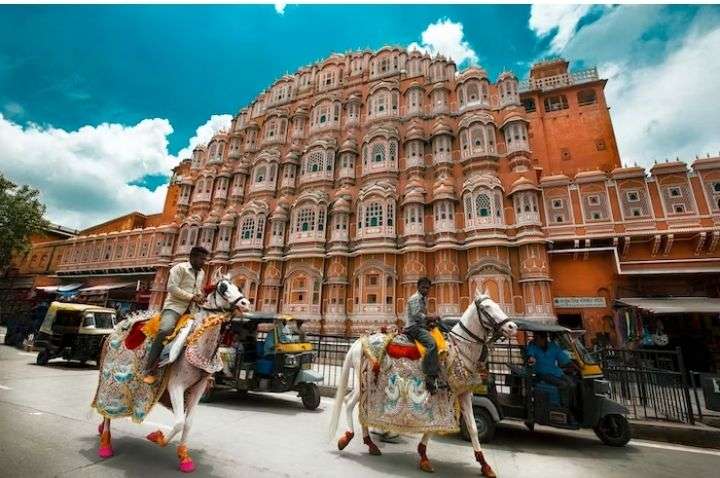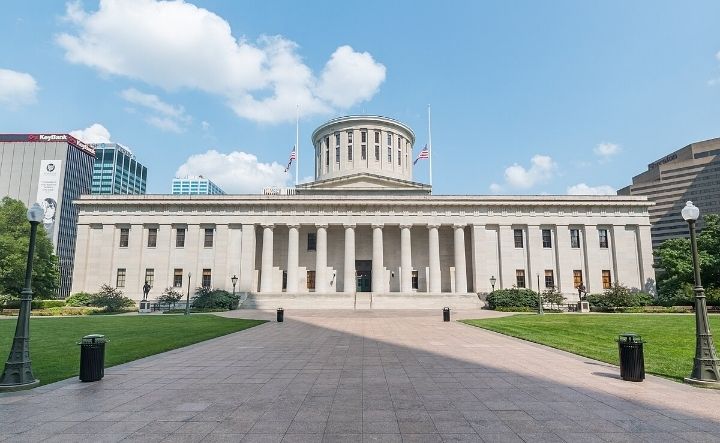Virginia is a state steeped in history and folklore, boasting a rich tapestry of haunted locations that intrigue and captivate visitors. From historic homes to abandoned asylums, each site carries with it a unique blend of architectural beauty and ghostly legends. Let’s exolore a journey through some of most haunted places in Virginia, where the past intertwines with the present, offering a glimpse into the mysterious and supernatural.
Contents
- 1 HAUNTED places in Virginia
- 1.1 Peyton Randolph House, Colonial Williamsburg
- 1.2 Ferry Plantation House, Virginia Beach
- 1.3 Captain Timothy Hill House, Chincoteague Island
- 1.4 Edgar Allan Poe Museum, Richmond
- 1.5 Monticello, Charlottesville
- 1.6 Tuckahoe Plantation, Richmond
- 1.7 The Cavalier Hotel, Virginia Beach:
- 1.8 Elbow Road, Virginia Beach
- 1.9 Pocosin Mission
- 1.10 St. Albans Sanatorium
- 1.11 Conclusion
- 1.12 Frequently Asked Questions about Haunted Places in Virginia
HAUNTED places in Virginia
Peyton Randolph House, Colonial Williamsburg
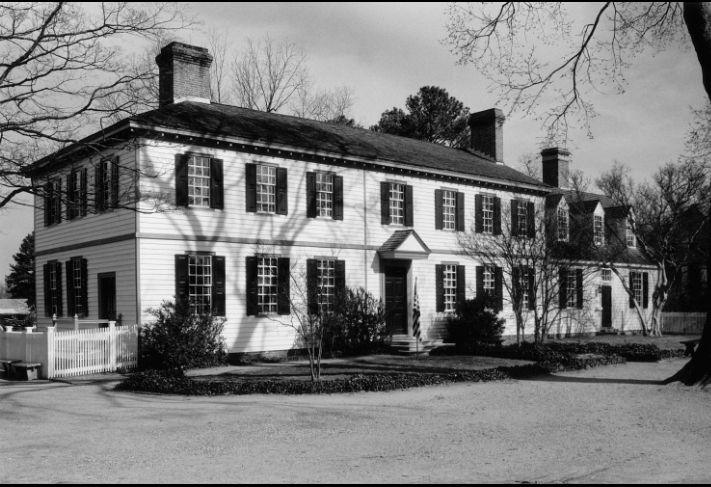
The Peyton Randolph House in Colonial Williamsburg, also known as the Randolph-Peachy House, is a historic house museum with a rich and intriguing history. Constructed around 1715, it stands as one of the oldest surviving buildings in the area. This two-story wood-frame structure, located at the corner of Nicholson and North England Streets, features a unique architectural style that reflects its Georgian origins.
The house has witnessed significant events, serving as a field hospital during the Revolutionary War and later as a hospital for wounded soldiers during the American Civil War.
Owned by prominent figures like Sir John Randolph and later the Peachy family, the house has a storied past intertwined with Virginia’s history. Peyton Randolph, a key figure in the Revolutionary War and the first President of the Continental Congress, played a pivotal role in shaping the nation’s early days.
The house’s association with influential individuals like Thomas Jefferson adds to its historical significance.
Throughout its existence, the Peyton Randolph House has been the stage for various tragedies, with tales of soldiers perishing within its walls and eerie encounters reported by visitors and residents alike. The house’s reputation for paranormal activity, including ghostly sightings and unexplained phenomena, has made it a popular destination for those intrigued by the supernatural.
Today, the Peyton Randolph House stands as a testament to Virginia’s past, offering visitors a glimpse into the lives of its former inhabitants and the historical events that unfolded within its walls. Its well-preserved architecture and rich history make it a must-visit location for history enthusiasts and ghost hunters alike.
Ferry Plantation House, Virginia Beach
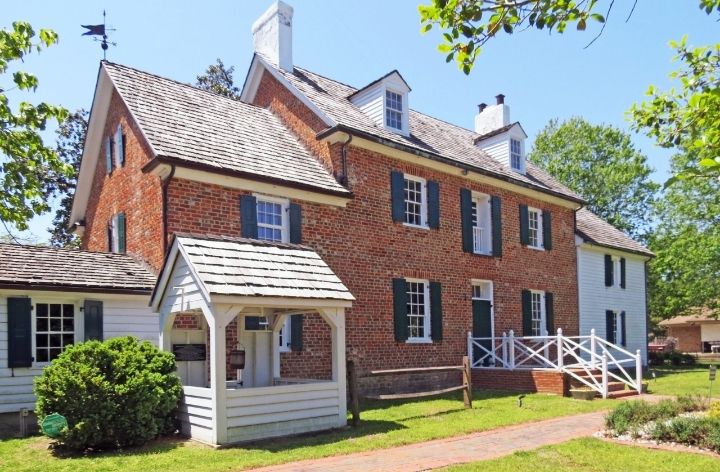
The Ferry Plantation House in Virginia Beach, also known as Old Donation Farm or Walke Manor House, is a historic brick house with a rich and intriguing past. Dating back to 1642 when the ferry service was initiated by Adam Thoroughgood to connect plantations via waterways, the site has witnessed significant historical events.
The current house, built in 1830, replaced the original Walke Manor house that was destroyed by fire. Notably, the property was the site of the trial of Virginia’s only convicted witch, Grace Sherwood, who was tried by water in 1706.
Over the years, the Ferry Plantation House has been associated with various uses, including as a plantation, courthouse, tavern, post office, and school. The house’s architectural style reflects Federal design elements and features a ten-room central passage plan.
Renovations and preservation efforts have ensured that this historic landmark remains accessible to visitors interested in exploring its rich history and reported paranormal activity.
The property is encompassed by open space and small gardens, with a large Southern Magnolia tree planted in memory of Sally Rebecca Walke’s fiancé in 1863. The house is reportedly haunted by eleven spirits, with ghost tours available for those intrigued by the supernatural. The Ferry Plantation House stands as a testament to Virginia’s past and offers visitors a unique blend of history and mystery to explore.
Captain Timothy Hill House, Chincoteague Island
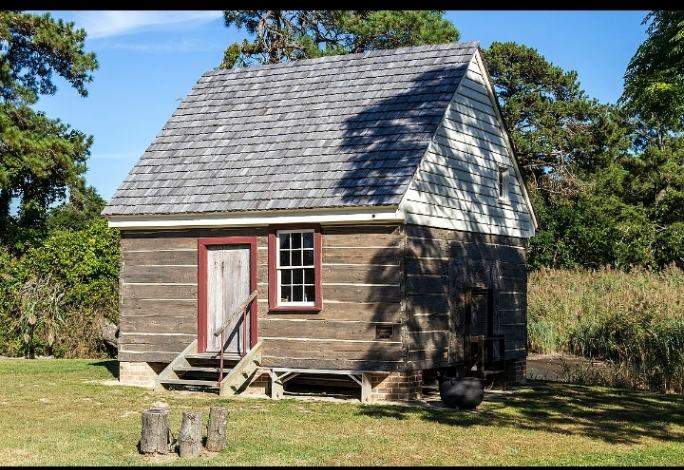
The Captain Timothy Hill House on Chincoteague Island, Accomack County, Virginia, is a historic home with a fascinating backstory. Built around 1800, this 1+1⁄2-story dwelling showcases unique log plank construction, making it a rare surviving example in Virginia. The house, originally facing demolition, was moved to its current location in 1980, preserving its historical significance. Featuring a wooden chimney adorned with carvings of sailing ships, the house stands out as one of the oldest remaining structures on Chincoteague Island. Notably, it was added to the National Register of Historic Places in 2011, recognizing its architectural and historical importance.
Visitors can explore the Captain Timothy Hill House at 5122 Main Street during specified hours, offering a glimpse into the past and the architectural heritage of the region.
This historic site, with a replica of its original wooden structure, serves as a tangible link to the island’s early days and provides a window into the history and mystery surrounding Captain Timothy Hill House.
Edgar Allan Poe Museum, Richmond
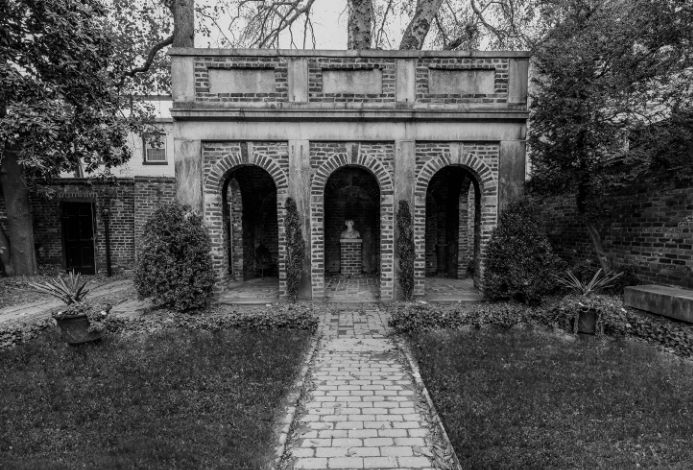
The Edgar Allan Poe Museum in Richmond, Virginia, is a significant cultural institution dedicated to commemorating the life and works of the renowned American writer, Edgar Allan Poe. Situated in the Shockoe Bottom neighborhood, the museum serves as a tribute to Poe’s time spent in Richmond, despite him never residing in the building itself. Established in 1922, the museum houses one of the world’s largest collections of original manuscripts, letters, first editions, memorabilia, and personal belongings of Poe, offering visitors a comprehensive insight into his life and literary legacy.
The museum’s exhibits provide a detailed overview of early 19th-century Richmond, where Poe lived and worked, showcasing his accomplishments through pictures, relics, and verse. The Poe Museum features three buildings that focus on different aspects of the author’s life and legacy, creating an immersive experience for visitors interested in delving into Poe’s world and the historical context of his writings.
Additionally, the museum’s placement within the “Old Stone House,” constructed around 1740, enhances its historical importance, as it is recognized as Richmond’s oldest remaining residential structure.
The preservation of this architectural gem and its transformation into a museum dedicated to Poe’s memory underscores the enduring legacy of the writer in the city he once called home.
Monticello, Charlottesville
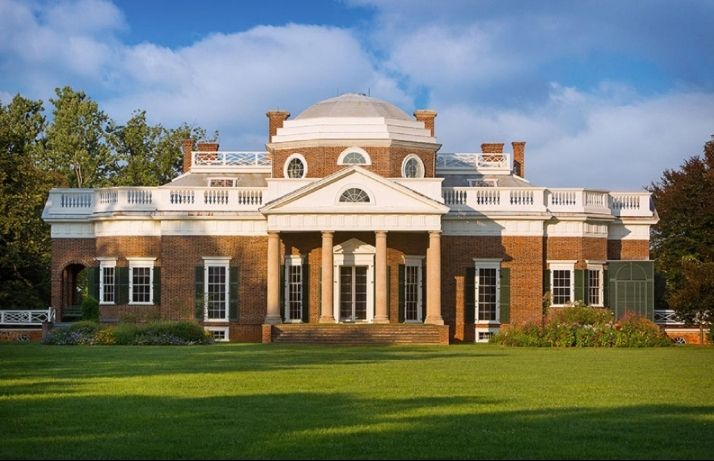
Monticello, located in Charlottesville, Virginia, is the iconic home of Thomas Jefferson, the third President of the United States and a Founding Father. Situated in Albemarle County near Charlottesville, Monticello is a masterpiece of neoclassical architecture and a reflection of Jefferson’s innovative spirit. This historic site, designated as a National Historic Landmark and a UNESCO World Heritage Site, offers visitors a glimpse into Jefferson’s life and the era in which he lived.
The estate, originally spanning 5,000 acres, showcases Jefferson’s architectural prowess and his deep connection to nature. Monticello’s gardens were not only ornamental but also served as experimental laboratories for various plants from around the world. The property includes Mulberry Row, where outbuildings for specialized functions like naileries and slave quarters were located.
Today, Monticello stands as a testament to Jefferson’s legacy and the complex history of slavery in America. The site offers guided tours of the house and outdoor gardens, providing visitors with insights into Jefferson’s life, achievements, and the people who lived and worked on the plantation. Monticello remains a significant historical landmark that preserves the memory of one of America’s most influential figures.
Tuckahoe Plantation, Richmond

Tuckahoe Plantation, located in Richmond, Virginia, is a historic site with a rich history dating back to the 18th century. This plantation, associated with the Randolph family, is renowned for its architectural significance and historical importance. The property has been well-preserved over the years, offering visitors a glimpse into Virginia’s colonial past and the lifestyle of the elite families who once resided there. Tuckahoe Plantation’s grandeur and beauty make it a popular destination for history enthusiasts and those interested in exploring the heritage of Virginia’s plantations.
The Cavalier Hotel, Virginia Beach:
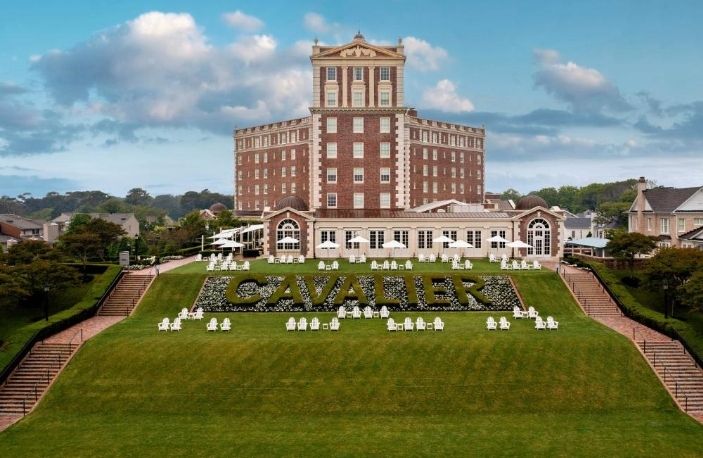
The Cavalier Hotel in Virginia Beach is a historic icon that has welcomed numerous luminaries and presidents over the years, including Frank Sinatra and Elizabeth Taylor. Following a meticulous restoration, the hotel now blends timeless luxury with modern amenities, offering guests a glimpse into its past grandeur while providing contemporary comforts. With 85 reimagined guest rooms and suites, each featuring plush fabrics and tasteful appointments, the Cavalier Hotel ensures a sophisticated and luxurious experience for visitors. Additionally, the hotel boasts world-class dining options, a full-service spa, a private beach club, and a classic indoor pool, making it a premier destination for travelers seeking a blend of elegance and modern convenience.
Elbow Road, Virginia Beach
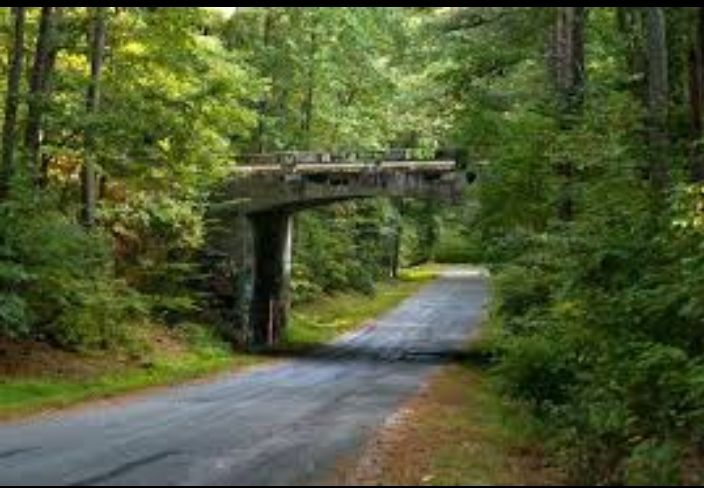
Elbow Road in Virginia Beach is renowned for its haunted reputation, with numerous reports of ghostly encounters and paranormal activity. The road has been associated with tragic events, including deadly car crashes and mysterious occurrences that have left many locals wary of driving on it. Stories of restless spirits, such as Mrs. Woble, an old lady who was reportedly murdered and whose ghost is said to roam the area, contribute to the road’s eerie aura.
Additionally, the legend of a drowned girl haunting the road, with claims that her wet footprints appear if one parks their car at night, adds to the road’s mystique and chilling atmosphere. The history of accidents, ghostly sightings, and urban legends surrounding Elbow Road have solidified its reputation as one of Virginia Beach’s most haunted locations, prompting caution and intrigue among those familiar with its dark past.
Pocosin Mission
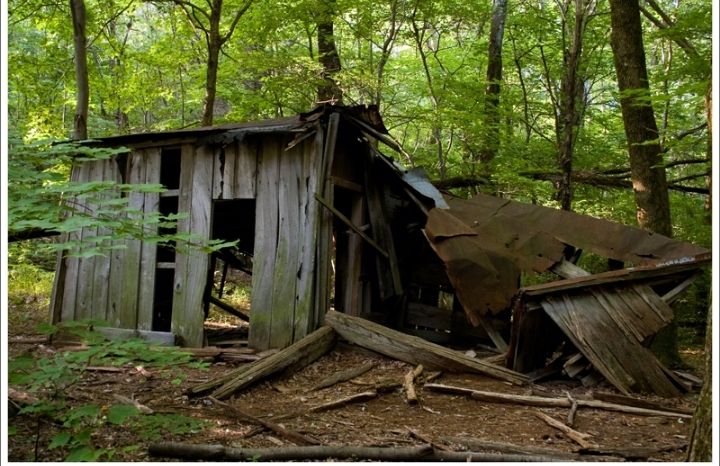
The Pocosin Mission, located in Shenandoah National Park, was an Episcopal mission established in 1904 to serve the mountain community in the area. The mission’s name, “Pocosin,” originates from a Native American word meaning “swamp.” Visitors can explore the ruins of the mission, which include stone steps, a small foundation, and a fallen chimney, offering a glimpse into the past and the community that once lived and worshiped there.
The site also features an overgrown cemetery with old, nameless headstones, adding to its historical significance. The Pocosin Mission Trail provides a 2.2-mile out-and-back hike along a fire road, offering a peaceful and historically rich experience for those interested in the area’s early 1900s community life and the mission’s legacy.
St. Albans Sanatorium
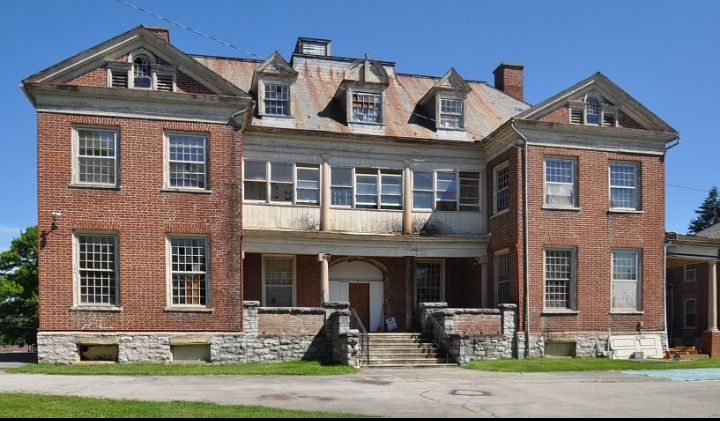
St. Albans Sanatorium, located in Radford, Virginia, has a rich and haunting history. Originally built in 1892 as a Lutheran school for boys, it was later converted into a hospital for the mentally insane in 1916.
The sanatorium’s imposing presence on a ridge overlooking the New River showcases Georgian architecture from the 18th century, adding to its eerie charm and historical significance. Today, St. Albans Sanatorium is known for its paranormal activity, with reports of dark phantoms, apparitions, and various hauntings that have made it a popular destination for ghost hunters and thrill-seekers alike.
The site offers private ghost hunts year-round and has gained a reputation as one of the most haunted spots in the eastern United States. With its abandoned asylum setting and stories of supernatural encounters, St. Albans Sanatorium continues to intrigue visitors interested in exploring the paranormal and delving into its mysterious past.
Conclusion
As we conclude our exploration of Virginia’s haunted locations, we have delved into a world where history and the paranormal intersect, creating an atmosphere of intrigue and fascination. From the elegant Peyton Randolph House in Colonial Williamsburg to the eerie St. Albans Sanatorium in Radford, each site tells a story of its own, inviting visitors to uncover the secrets and spirits that linger within. Whether you seek a glimpse into the past or a brush with the supernatural, Virginia’s haunted places offer a captivating journey through time and mystery.
Frequently Asked Questions about Haunted Places in Virginia
Q: What are some of the most haunted sites in Virginia?
A: Virginia boasts a plethora of haunted locations, including the Peyton Randolph House in Colonial Williamsburg, the Ferry Plantation House in Virginia Beach, the Captain Timothy Hill House on Chincoteague Island, the Edgar Allan Poe Museum in Richmond, Monticello in Charlottesville, Tuckahoe Plantation in Richmond, the Cavalier Hotel in Virginia Beach, Elbow Road in Virginia Beach, Pocosin Mission in Shenandoah National Park, and the St. Albans Sanatorium in Radford.
Q: Are these haunted places open to the public for visits?
A: Many of these haunted sites have been preserved and are open to the public for tours and exploration. Visitors can experience the rich history and reported paranormal activity at these locations, offering a unique blend of historical significance and ghostly encounters.
Q: What makes these places haunted?
A: These sites are believed to be haunted due to their historical significance, tragic events that occurred on the premises, and reported ghostly sightings and encounters by visitors and residents. The combination of rich history and eerie legends contributes to the haunted reputation of these locations.
Q: Can visitors participate in ghost tours or paranormal investigations at these sites?
A: Some of these haunted places offer ghost tours, paranormal investigations, and private ghost hunts, allowing visitors to delve deeper into the supernatural stories and legends surrounding these locations. These experiences provide a thrilling and immersive way to explore the haunted history of Virginia.
Q: Are there any specific ghost stories or legends associated with these haunted places?
A: Each of these haunted sites has its own unique ghost stories and legends, ranging from tragic deaths and mysterious occurrences to sightings of restless spirits and unexplained phenomena. These stories add to the allure and mystique of these haunted locations, captivating visitors with tales of the supernatural.

Safnaa has been working in the travel industry for over a decade, and her expertise and knowledge are reflected in the high-quality content and resources available on travelstutor.com. She is dedicated to providing travelers with accurate and up-to-date information on destinations, accommodations, transportation, and activities, ensuring that they have the best possible travel experience.


